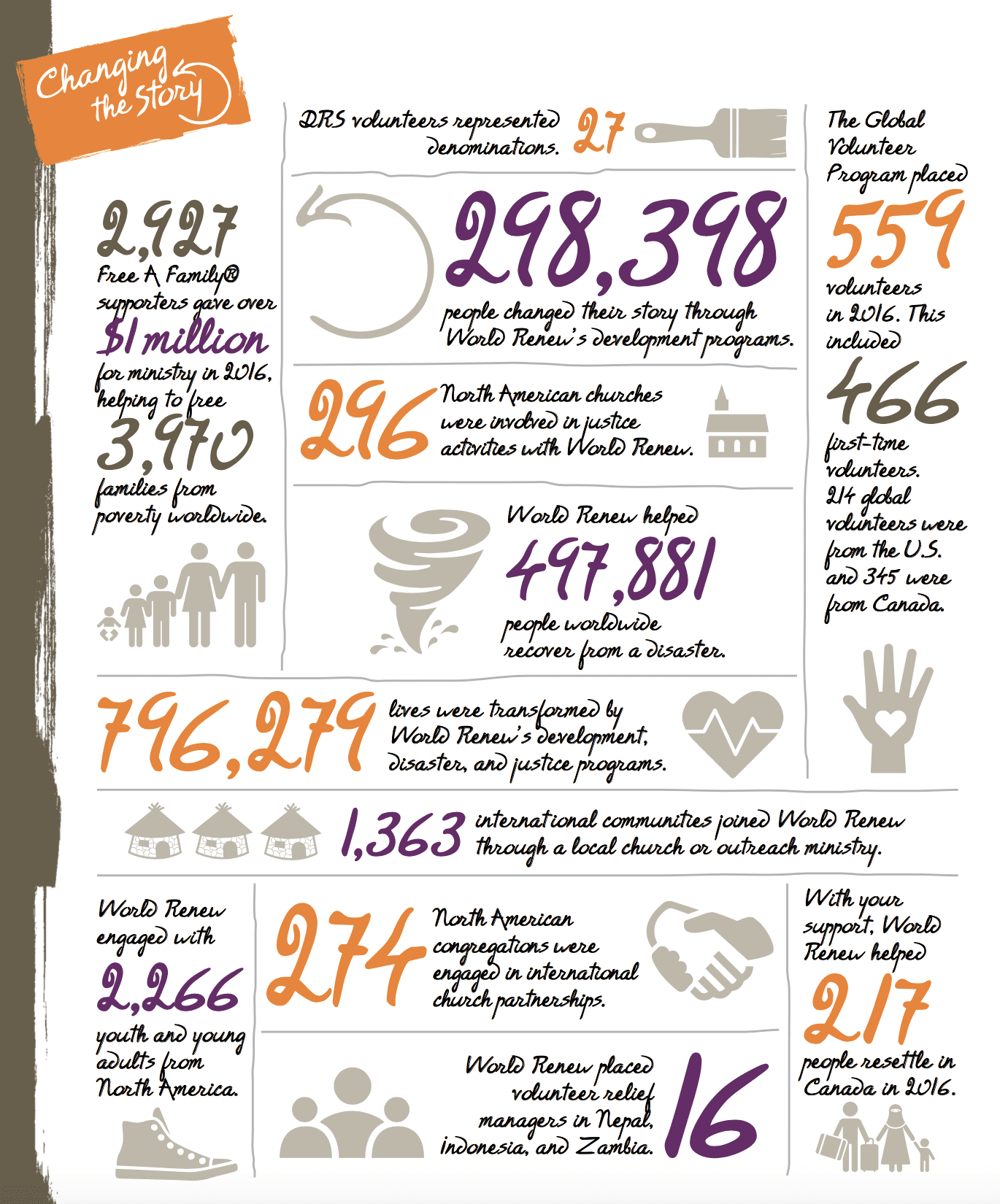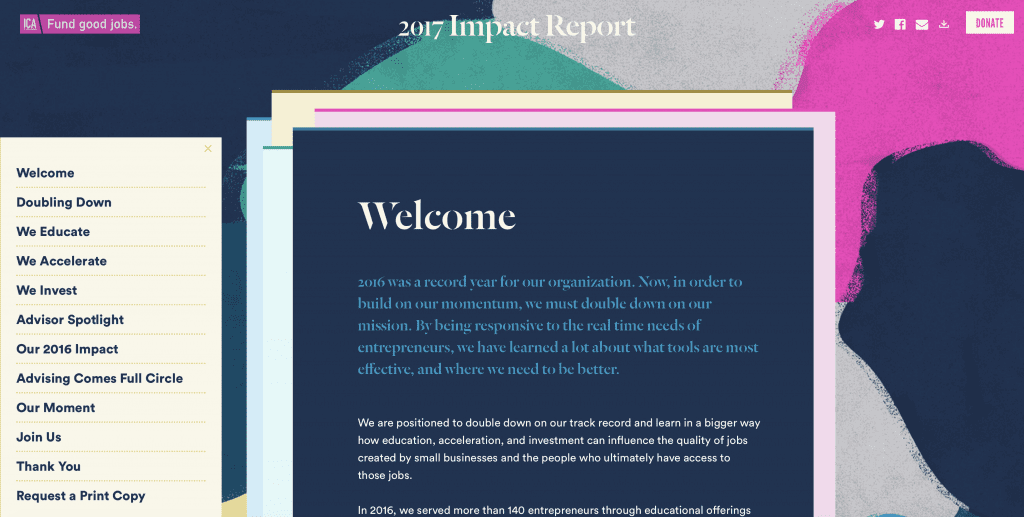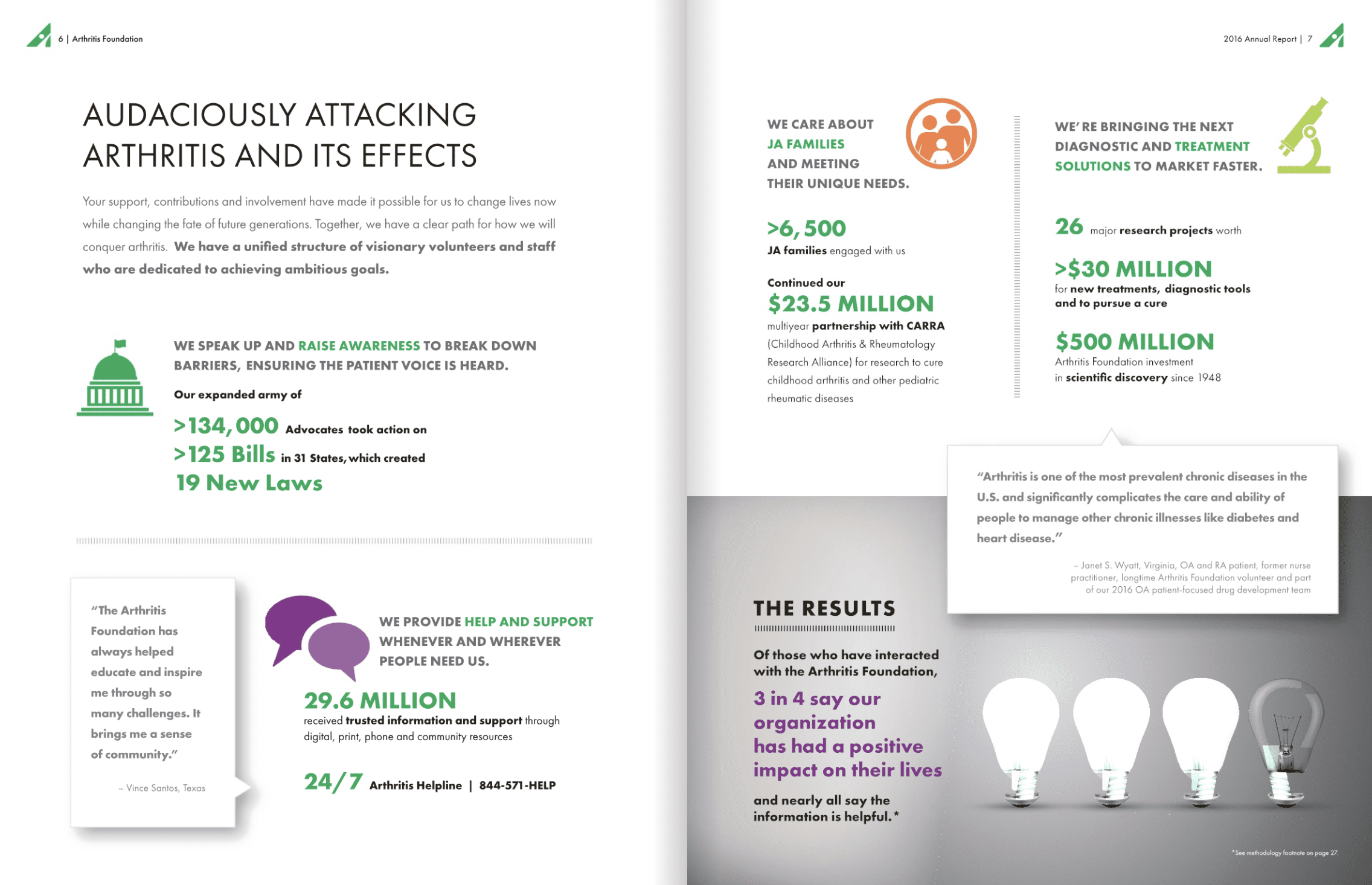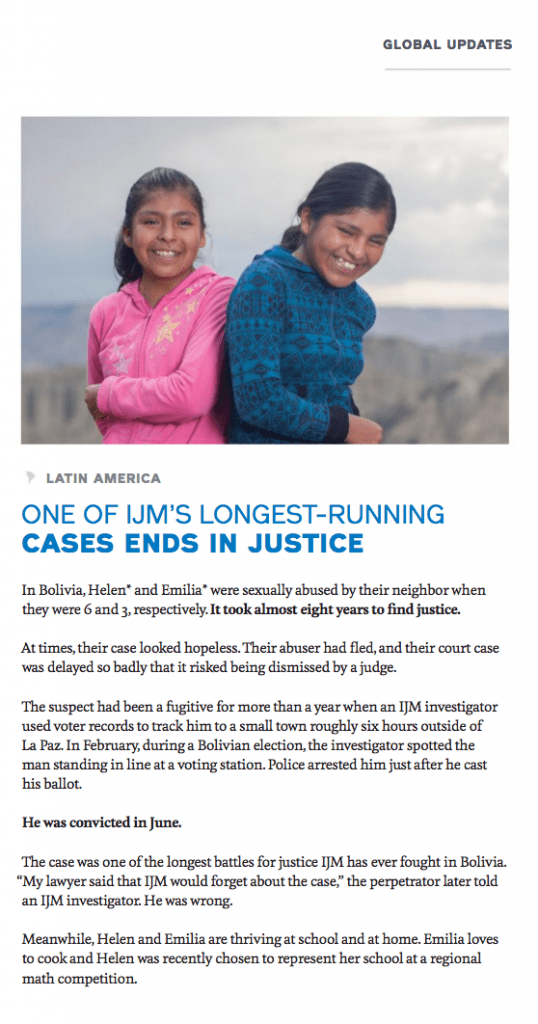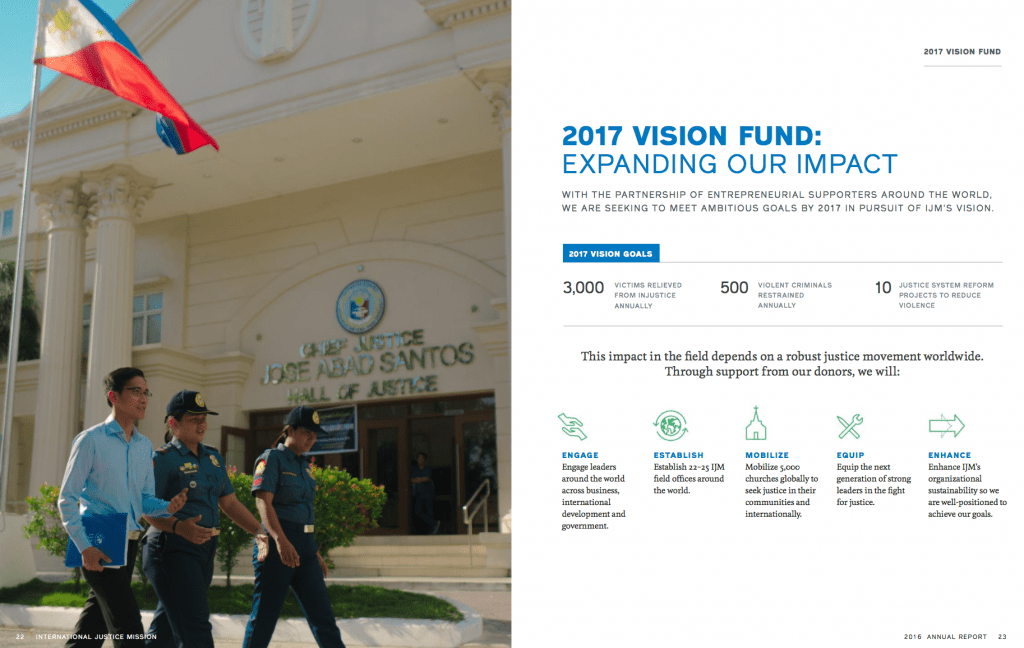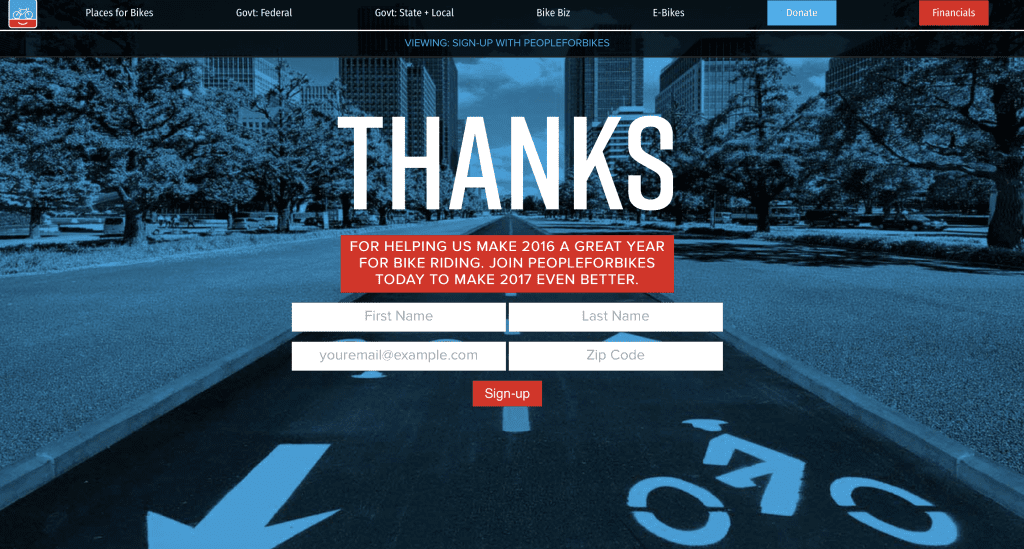Do you find preparing your organization’s annual report a daunting task? Don’t worry, you’re not alone. However, with these seven secrets to irresistible annual reports, you’ll be able to wow your donors and keep them coming back for more. So what are you waiting for? Get started!
Why does my nonprofit need an annual report? Let’s explore why you should have an annual report for your donors.
Your annual report is an essential piece of marketing collateral. It tells your donors what you accomplished together over the past year and how their contributions made a difference. An annual report is also a great opportunity to show off your organization’s transparency and accountability. By sharing your financial information and impact metrics, you show that you’re a responsible steward of donor dollars.
What’s more, an annual report is a valuable tool for attracting new donors. By sharing your story and highlighting your successes, you can inspire others to support your work.
Now that we’ve answered the question “Why should my nonprofit have an annual report?”, let’s move on to some tips for creating a great one.
1. The Donor is the Center of the Story
Who is the persona for your annual report? Yes, there are a variety of audiences who will use your annual report, but who are you creating the piece for? If it’s not the donor, you’re making a mistake.
The annual report should tell an emotionally connecting story that deepens your relationship with current and potential donors. How do we accomplish this?
The simplistic answer is you need to position things using the words “you” and “your” in the copy. Your support allowed us to enter five new communities this year … You built a well that serves 500 families … Because of people like you, our building campaign met 100% funding one month ahead of schedule!
But why does the annual report need to speak in the voice of our donor? What about the great work WE did this year?
You aren’t able to do any work without the donor. The donor needs to feel that you’re the conduit by which she can get the work she’s passionate about accomplished. If she feels like you don’t need her, that you can get it all done yourself without her help, she’ll quit giving and give to an organization that does need her support.
What’s in it for me? Great annual reports answer the question “What’s in it for me?” for the reader. They don’t just focus on what you did as an organization, but they also show how the reader was a part of your success.
Some nonprofits make the mistake of thinking that more information is better information. This simply isn’t true. Your donors don’t want to wade through pages and pages of numbers and metrics. They want to see how their contributions made a difference. They want stories and photos that illustrate the impact their gifts had.
World Renew does an excellent job in their annual report demonstrating how donors make a difference for the people:
Click the image for a larger version
Using language such as “With your support” and “Thank you for doing your part” in the copy reinforces that the organization needs you, the donor, to be successful.
In the Mint Musem’s annual report, 2014-2015 was declared the “year of the donor.” Throughout the annual report, The Mint Museum talked about different constituents and the impact they have on the museum.
2. Take Advantage of Digital Opportunities
Many organizations have moved their annual report to digital only (or digital + a small print run) to take advantage of the reduced costs of distribution, yet haven’t taken advantage of digital capabilities. Digital offers us animation, videos, links, and embedded social. Most of the annual reports I reviewed for this blog posts were PDFs or flip books (a lot of organizations use ISUU for flip book tech) with very few organizations taking advantage of even something simple like embedding a video.
Creating a digital annual report gives us expanded opportunities, use them!
Girls, Inc. uses video, animated GIFs, and web animation to create an appealing annual report. Designing each section so it draws the reader down the page helps fulfill the mission of the annual report: telling your story to donors to reinforce why they gave and explaining your mission to potential donors.
ICA’s use of a table of contents and faux pages helps readers navigate the annual report and keep each page clean.
3. Be Visual
This secret is a not-so-secret secret as it seems to appear every year on everyone’s “top secrets to a great nonprofit annual report” blog posts, yet it still escapes too many organizations. Studies show you have about 3 seconds to grab someone’s attention and about 8 seconds to keep it. What’s going to be the driving force in someone’s decision to give your annual report a chance? If you visually appeal to the reader in those 8 seconds.
IJM does an excellent job appealing visually to the reader. The organization uses high quality, emotional pictures throughout the annual report that tell a story. You can flip through the IJM annual report, not read one word and still understand the story of what the organization is about. It’s very deliberate on their part to appeal to a wide range of readers – text heavy stories combined with highly attractive photos.
The lesson: use high quality photos for those who just want a visual glance at your organization combined with excellent story telling to really engage the widest audience.
Tell the story of your metrics and key financials using graphics. Reading tables and long explanations of financials will bore your audience, so liven it up a little with great graphics.
The Arthritis Foundation uses infographics and explanation bubbles throughout the annual report to illustrate their key metrics and accomplishments.
The annual report is an important marketing tool for your organization, so don’t overlook the design! Keep in mind that first impressions matter. You want your annual report to look professional and polished.
There are a few key elements to keep in mind when designing your annual report. First, make sure the overall layout is easy to follow. Use headings and subheadings to break up the text and help guide the reader’s eye. Second, use photos and infographics to break up the text and add visual interest. And finally, use colors and fonts that are consistent with your organization’s branding.
If you’re not sure where to start, there are plenty of great annual report templates available online. Canva is a great resource for do-it-yourself design. Simply enter “annual report” into the search bar and you’ll be presented with a variety of templates to choose from.
Your annual report is a reflection of your organization, so take the time to make it great! By following these tips, you can create an annual report that will impress your donors and help you achieve your fundraising goals.
4. Tell Stories of Real People
The most impactful annual reports don’t tell the organization’s story, they tell the stories of all of the stakeholders: the beneficiaries, the staff, and the supporters. Instead of a dry recitation of the facts and how your organization performed the previous year, tell stories of impact that illustrate the necessary facts. Humans love stories and if you want people to be impacted by your annual report – or at the very least, read the thing – you should tell captivating stories.
In IJM’s annual report, you find numerous stories of beneficiaries that illustrate the organization’s good work. You don’t have to say “our organization is great because we did these things.” Instead, highlight what your organization is doing and then show the read with a great story.
A great story of success follows the same format as all great stories:
- you need someone who is struggling and can’t escape a problem
- your organization steps in as the guide to help the beneficiary
- the donor comes in as the hero who saves the beneficiary
- you address the problem, provide a solution
- show how the life of the beneficiary is different because you took action
This story structure is easy to follow, demonstrates the great work you’re doing, and includes in the donor to see how she could make a difference by partnering with your organization.
When writing stories, try to use active voice and present tense as much as possible. This will make the stories more engaging and easier to read. And be sure to include plenty of quotes from beneficiaries, staff, and volunteers. These personal accounts will help bring your stories to life.
If you’re not a natural storyteller, don’t worry! There are plenty of resources out there to help you get started. Learn more about the story of the one to learn how to write nonprofit stories that inspire action. And for more tips on writing great stories, our articles on donor communication.
5. Inspire Action
Your annual report usually has two audiences: existing supporters and potential supporters. You may be unaware of all the uses of your annual report, I recommend speaking with your major donor reps, planned giving folks, customer service team, local community outreach department, board members, executive team, and others to discover how people use the annual report. When we did that, we discovered our major donor reps use the annual report as a general brochure would be typically used and our event organizers take a few to every event to explain how the organization has operated. With these use cases in mind, you should make sure your annual report inspires action and gives people a way to take action.
In IJM’s annual report, they review their vision for 2017 and add in specific areas where the reader can help.
In their annual report, People for Bikes has a subscribe call to action at the end of the annual report to connect with more people.
Near the end of the CARE annual report, the organization provides you a number of ways to get involved. By including it at the end, you’re able to best capture those who are interested in reading the entire annual report. CARE does an excellent job of telling stories from the donor’s point of view throughout the piece illustrating the impact the donor is making on the organization’s beneficiaries.
As for impact metrics, choose the ones that are most relevant to your work and that best illustrate the difference you’re making in the world. Some examples might include number of people served, percentage of clients who attain their goals, or average increase in test scores for students in your program.
If you’re not sure which metrics to include, ask your donors! They’ll be happy to give you their input on what information they want to see.
6. Market Your Annual Report
To be honest, we’ve struggled with this in the past. With all of the time and resources invested into producing the annual report, doesn’t it make sense to invest in heavy marketing for the piece? If you’re creating a storytelling annual report that inspires people to take action, wouldn’t it make sense to invest equally as much time as it took to produce the annual report into marketing it?
Beyond mailing out copies to major donors and emailing the digital version to your entire email file, why not look into other marketing opportunities, such as:
- Build custom targeted lists in Facebook to advertise the annual report to. These lists could include your donor file, email list, lookalike audiences for each, website visitors, fans of similar nonprofits, or fans of celebrities and influencers engaged with your nonprofit.
- Create an annual report video to provide highlights of your year.
- Create Google Grant Adwords to promote the annual report. Use your brand ads to promote the annual report.
- Engage with bloggers who support your organization to promote the annual report.
- Post infographics from your annual report to Pinterest and Instagram to reach the visual-loving crowd.
7. Learn to Leave Stuff Out
Your annual report doesn’t need to tell the complete story of your nonprofit and it certainly doesn’t need to contain your entire annual financials. There’s a place for that kind of information. Instead, the annual report tells a compelling story to the reader reinforcing why they supported your organization or why they should support you. Here’s a couple of things to leave out of the annual report:
- Exciting information … only to your staff. You may be thrilled about your new donor management system, the HVAC being replaced, or an exciting new travel policy, but none of them belong in your annual report. If you have news that only thrills your staff, keep it for the employee newsletter.
- Detail financial reporting. You should have some financial information to give the reader a snapshot of your finances, but you can produce the 990, separate financials, or your financial audit to share all the details.
- The future. It’s ok for the President or Executive Director to hint at future plans, but don’t dwell on them. The annual report is a look back on the past year, not a look forward to the future. It’s great to include a page of future plans, especially when it comes to motivating donors to action, but positioning the annual report as a look at the future is the wrong goal.
- Jargon-filled articles. Industry jargon and technical details on your theory of change don’t below in the annual report. Avoid uncommon acronyms or insider language and go for beneficiary stories that tell the impact a donor made on a life.
Best Example Nonprofit Annual Reports
Looking for inspiration? Check out these great annual reports to see how other nonprofit organizations produce their annual reports.
- 350.org
- Arthritis Foundation
- Billy Graham Evangelistic Association
- CARE
- ChildFund
- Children’s Museums
- Indianapolis Children’s Museum
- Focus on the Family
- Girls, Inc.
- Girls Who Code
- ICA
- IJM
- Michael J. Fox Foundation
- National Air and Space Museum
- National Children’s Alliance
- People for Bikes
- Portland Museum of Art
- Salvation Army
- Save the Children
- Toledo Museum of Art
Creating a Great Annual Report Helps Donors Trust Your Work
You create trust with your donor with an excellent annual report. You can retain more donors and raise more money when you build trust and demonstrate the value of your work. In our fundraising courses, learn how to create these deep relationships with donors where they trust your organization and become lifelong supporters.
